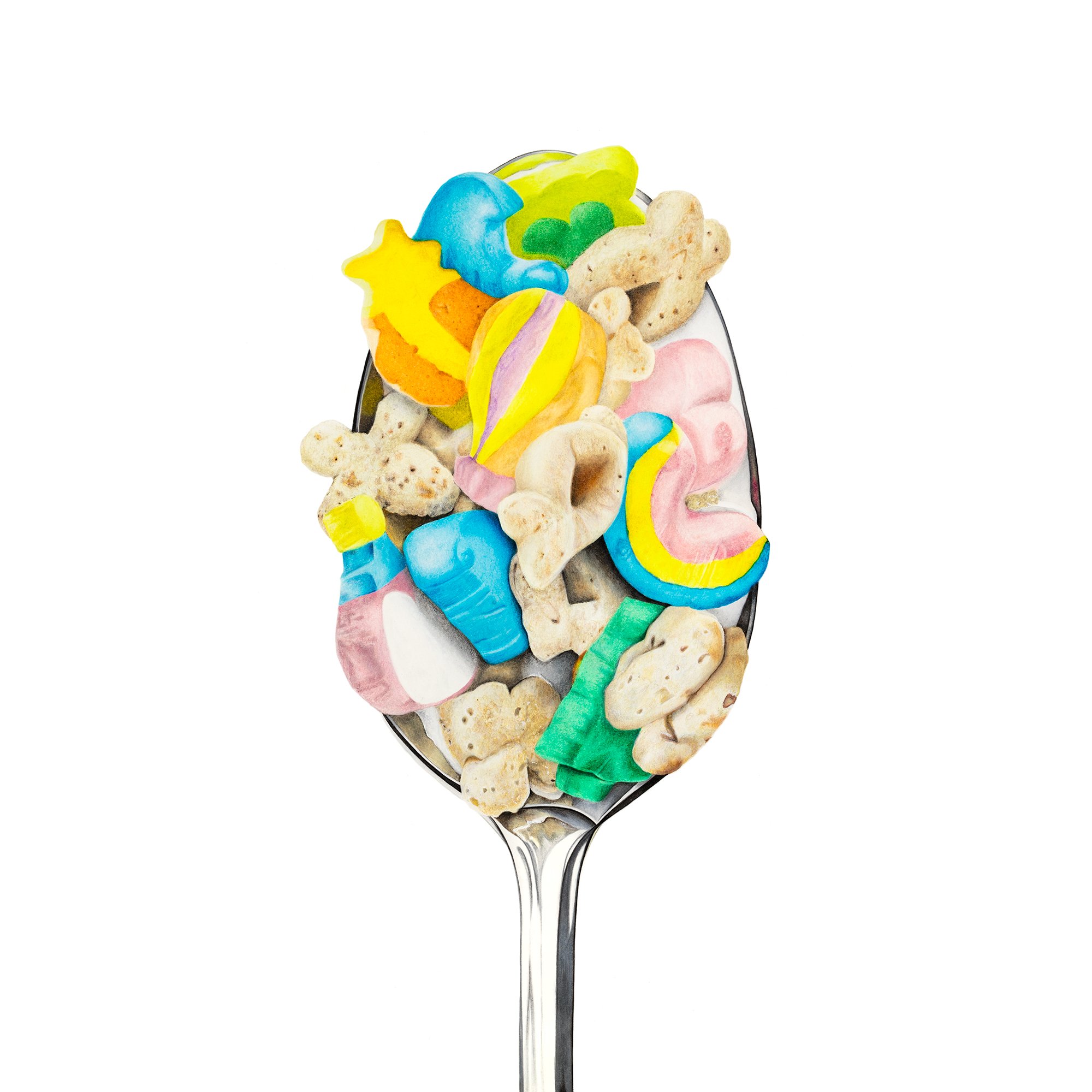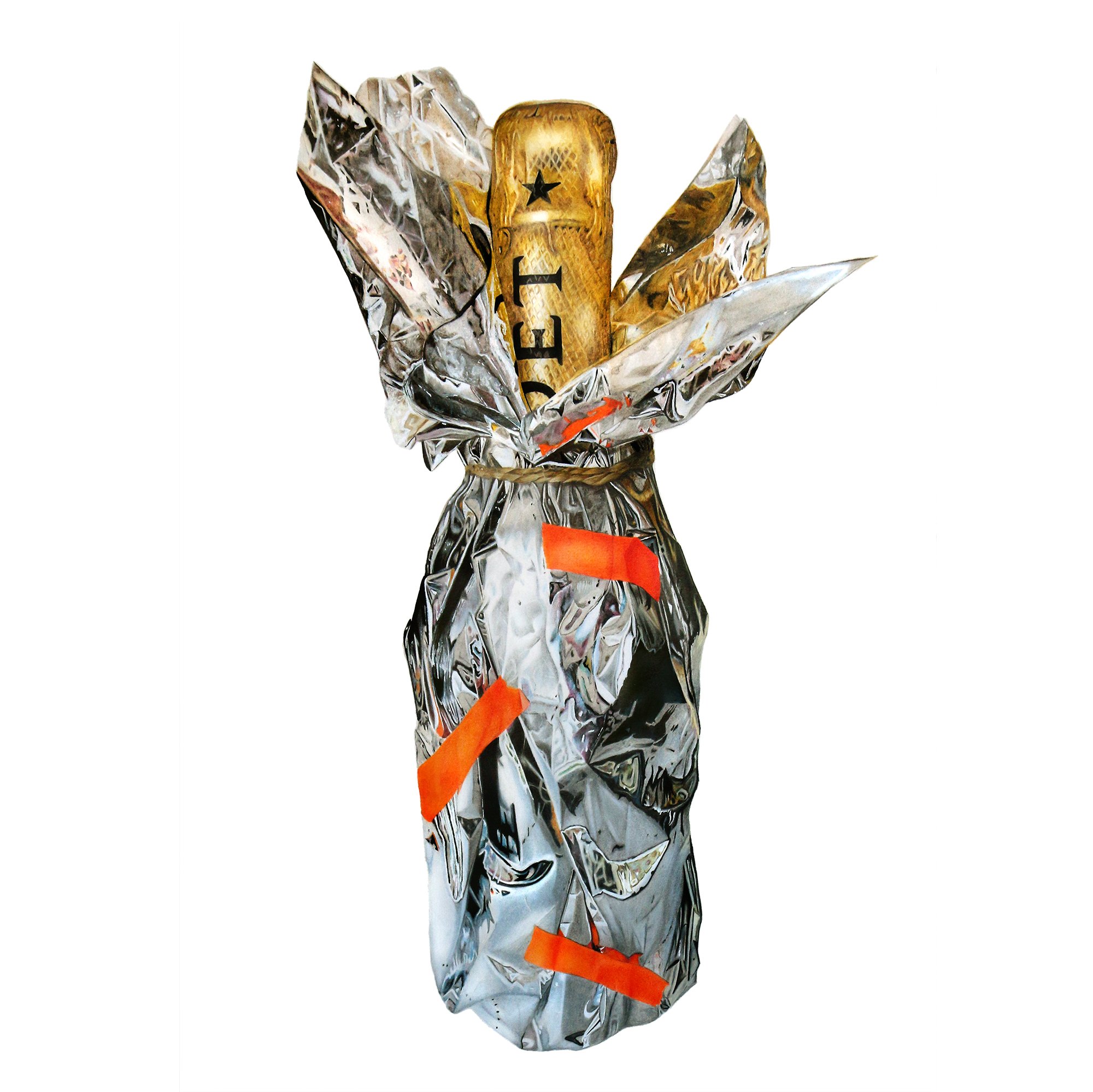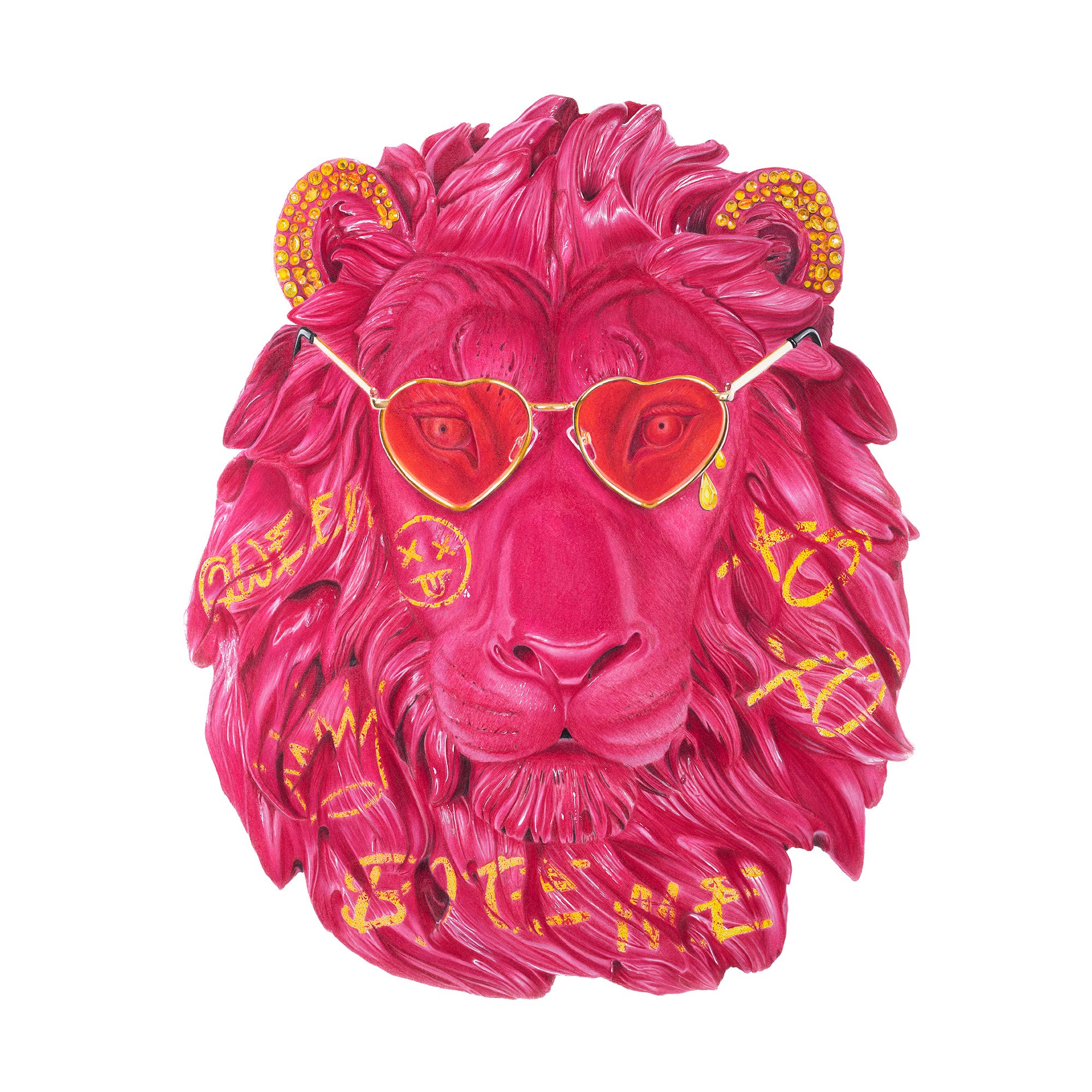ARTIST INTERVIEW: Jordanna Ber
Tell me about yourself, describe your journey as an artist.
I’m a Canadian born, coloured pencil pop artist. I live and work in sunny Barcelona, Spain.
I spent my childhood in the wilderness of northern Ontario, climbing trees, playing with bugs, swimming in the lake and running free. As a youngster, I was never one for organised sports and gravitated towards the art supply closet whenever given the chance. I relished in the freedom that came with a blank canvas and no rules.
So, naturally I pursued an undergraduate degree in Design which led me down a professional path of creative roles, initially designing beauty and fashion spreads for magazines, as well as national billboards for well known brands such as Joe Fresh.
My father is an entrepreneur, and from a young age he instilled in me the importance of curiosity, a fearlessness for taking risks and making mistakes. While I loved the creative side of my day to day, I yearned for knowledge of the other side. An understanding of the finance, strategy, and operations side of the business. So in 2016 I decided to pack up to pursue an MBA in the UK.
Upon graduation, interesting work opportunities in the tech industry brought our little family to Barcelona. This city is brimming with creativity and beauty and so while working a day for an amazing startup, I began painting and drawing in the evenings. It started out with a sketchbook and some coloured pencils, and like most things I do, quickly snowballed to me creating a full on studio in our upstairs loft (I have a tendency to go from 0-100 pretty fast). My background in marketing and design came in extremely useful when creating a website, social presence and setting up a small business account. The rest has been a roller coaster ride I just can’t get off!
What inspires you to create art? Have your surroundings influenced your artwork?
My surroundings most definitely influence my artwork! My first series was all about nostalgia from my childhood and objects that each represented a moment frozen in time. My second series was completed while working out of a street and urban art gallery in the city. For this series, I can’t deny that there was inspiration drawn from the other graffiti artists I was working with at that time.
I feel there’s so much beauty in working alongside other creatives and makers. When you have that spirit alive all around you, there’s this organic energy that gets exchanged and expressed in unexpected ways. Your work and theirs is better for it.
When did you develop your style? Why coloured pencils?
I have a genuine appreciation for working across various artistic mediums, each offering its own unique appeal. Acrylic paint and oil pastels for example, grant me a liberating sense of creativity. I'm also drawn to photography and interned back in the day with some renowned photojournalists. Nevertheless, my inherent nomadic nature often leads me to favour the simplicity of pencils and paper, easily fitting into my carry-on (although my love-hate relationship with my industrial electric sharpener is a story for another time).
Pencils provide the advantage of immediate use without the need to wait for drying or fret over stretching canvases upon arrival at a new destination. Many of my pieces have accompanied me on adventures. So far, my commissions have ventured with me to the scenic Lofoten Islands in Norway, northern Canada, and the dry desert landscapes of southern Spain.
Beyond their portability, coloured pencils offer an intriguing twist in the realm of fine arts. Traditionally associated with children's art supplies, I consistently surprise observers when they learn that my entire body of work is exclusively crafted using coloured pencils. However, coloured pencils possess remarkable longevity, and when meticulously layered and blended, they acquire a pliable quality akin to oil pastels, enabling me to manipulate and arrange colours to my liking. To me, coloured pencils represent a delightful act of rebellion within the world of fine art.
What is it that interests you about pop art?
Pop art is appealing to me for a handful of different reasons. It’s a reflection of popular culture and challenges boundaries of what art can or should depict. It’s total creative freedom and social commentary. Pop art is often a critique of the commodification of art, consumerism, celebrity culture and mass production. Just like how hip hop artists sample from different genres of music, pop artists are free to sample and shift meaning of existing products.
I love the concept that pop art challenges the elitism associated with traditional art forms by embracing popular culture and making art more accessible to a broader audience. It blurs the lines between high and low art, contributing to the idea that art could be found in everyday life. Pop art challenges the notion that fine art should exclusively depict lofty or profound subjects. By incorporating elements of popular culture, it demonstrates that art could engage with the ordinary and the mundane, blurring the boundaries between high and low art forms.
Tell me about the ’Not Your Trophy’ collection. What is this about? Why is this subject important to you?
"Not Your Trophy" is a vivid and psychedelic interpretation of the conventional hunting lodge trophy wall. This series serves as a tapestry woven from the threads of my experiences spanning the past decade. My passion for animals has played a central role in shaping this collection.
My ventures into wildlife conservation while working as a guide for sustainable tours in South Africa and my professional experience at a pet tech company further deepened my connection to the animal world. Witnessing the enduring debate surrounding firearms in the United States, evokes a potent blend of anger and sorrow within me. It is disheartening to see a system that appears to fail, not only our fellow creatures, but also humanity itself.
In essence, this collection can be described as a fusion of my passions and fears expressed through the lens of pop art.
Describe your creative process from start to finish of one of your pieces. How long do they take to create?
Each of my pieces takes between 80-200 hours of drawing. This doesn’t include time developing concepts, gathering materials, photographing objects, making digital renders and colour matching imagery. It’s a very involved process and I think that if I tried to get an accurate idea of how long a piece truly takes, I might not enjoy the process as much. The drawing process is like a moving meditation for me. I get into a flow state of mind and hours upon hours can pass before I realise that the sun has set and I never ate dinner.
Typically, I will try to finish one piece a month, be it part of a new series or a client commission. Every piece starts out with a concept and emotion that I’d like to elicit. Often I’ll need to acquire the object in question to photograph it, but more recently I’ve also been working with a great 3D artist out of the UK to help create models for some of the crazy ideas I’ve imagined (like new marshmallows for Lucky Charms cereal). When I’m content with the image mockup, my next step is to create the colour card for the piece. A colour card is a tool I use to match the coloured pencils (or blends of multiple pencils) against the image for the most realistic finish. I created detailed colour cards for every single pencil brand and colour that I’ve used. They include a swatch of the colour, the brand of pencil, and the name or numeric code (just like a personal Pantone collection). This step cannot be rushed as it’s essential to achieve a realistic finish. Once the colour card is created, the fun part can begin and I sketch the initial rough drawing in pencil, before diving in with colour.
Out of all your work, which piece are you most proud of?
One of the most personally significant artworks I've created to date is my colossal disco ball, aptly named 'Bling Bling.' This piece marked the culmination of my nostalgia series in 2021, and serves as a symbol of freedom and a heartfelt tribute to my cherished adopted city, Barcelona.
In the making of this piece, I transported a giant disco ball to the top of Parc Güell, a vantage point offering an amazing panoramic view of the Barcelona skyline. From there, I captured the reflections of the city's architecture, within the mirrors of the disco ball.
'Bling Bling' came into existence during a time when the shadows of Covid restrictions were gradually being lifted. Its title, 'Bling Bling,' also playfully nods to Barcelona's legendary nightclub scene, adding a touch of whimsy to its profound symbolism.
What has been your proudest/most challenging moment as an artist?
My first large show with The Other Art Fair in London was a massive achievement. To have developed a consistent body of work for public exhibition alongside some of my favourite modern artists was a surreal experience. It was an incredible introduction into a welcoming community with such a wealth of knowledge and talent.
The choice to be an artist is something you need to wake up and commit to everyday. I don’t feel there is a specific thing that stands out as ‘most challenging’ but rather a myriad of everyday choices and grit that artists need to have in order to succeed in this business. It’s a marathon that requires a balance of dedication, a childlike sense of curiosity, a business mindset and resiliency that you’d be hard pressed to find in any other industry.
Why do you think art is important in society?
I believe that art plays a multifaceted role in society, contributing to cultural identity, personal and societal reflection, communication, and the enrichment of our lives. Its significance goes far beyond simple aesthetics.
Art serves as a powerful form of cultural expression. It allows individuals and communities to convey their values, beliefs, and experiences. This cultural expression helps preserve and pass down traditions and stories from one generation to the next, fostering a sense of identity and belonging.
It also has the capacity to evoke a wide range of emotions and stimulate intellectual thought. Art can challenge perceptions, provoke introspection, and encourage critical thinking. This emotional and intellectual exploration can lead to a deeper understanding of ourselves and the world around us.
Artists are often at the forefront of innovation as they are freethinkers that aren’t afraid of pushing the boundaries of what is possible, leading to new movements, technologies, and ideas. This creative spirit can spill over into other areas of society, driving innovation and progress.












